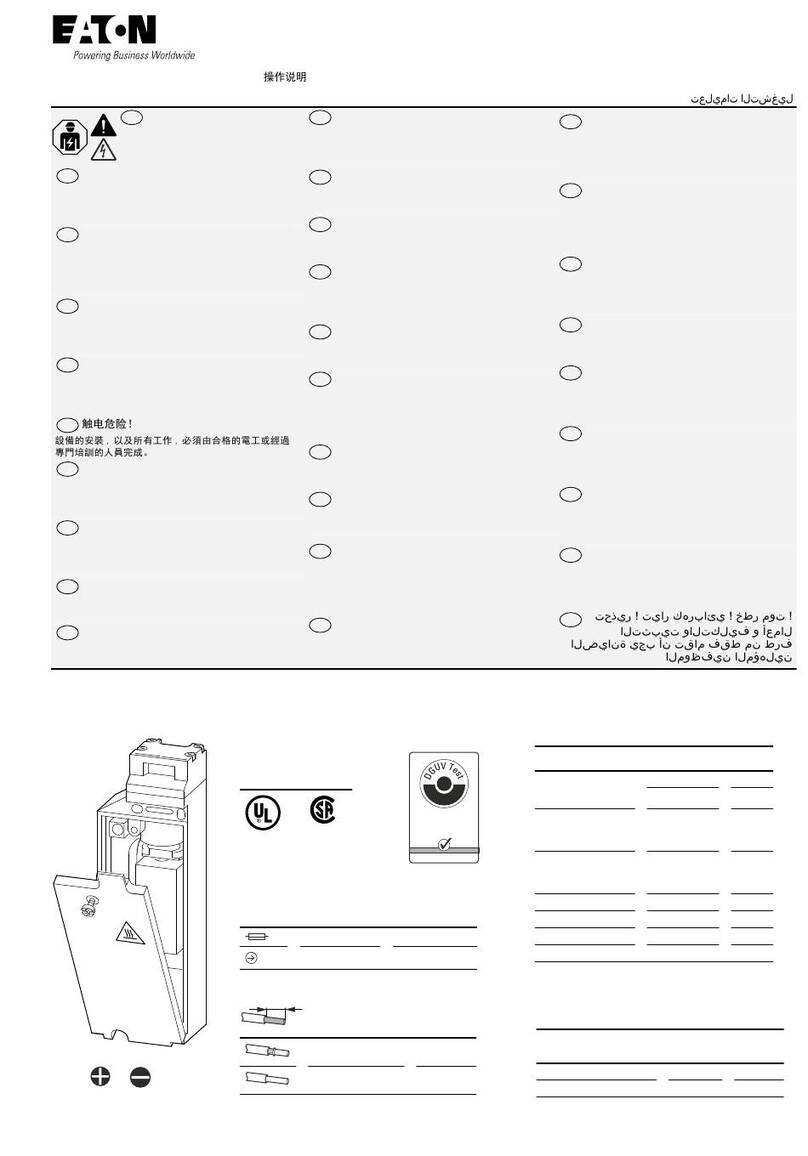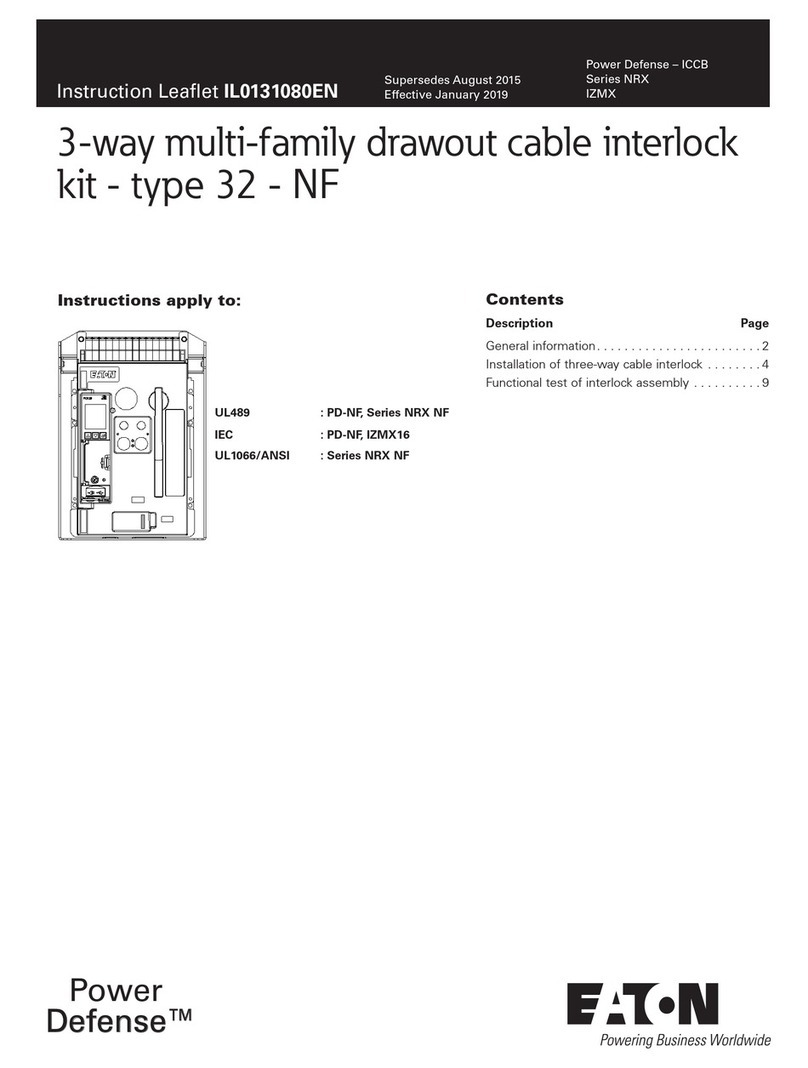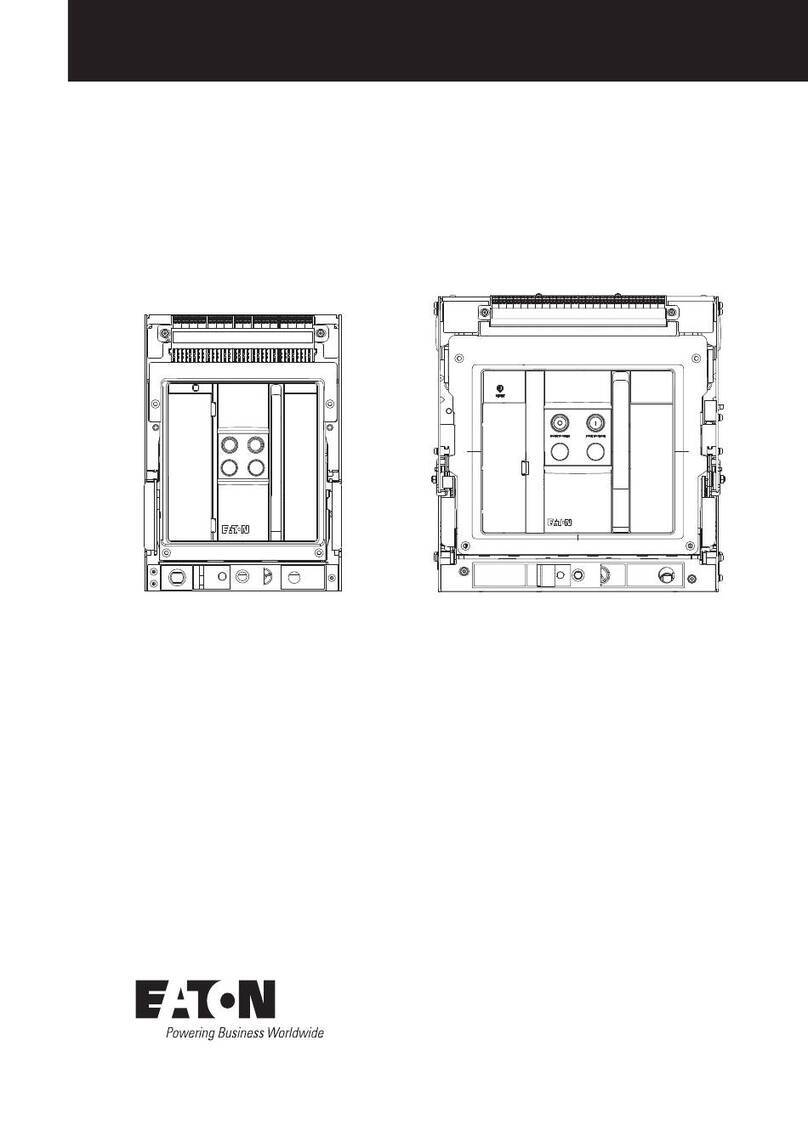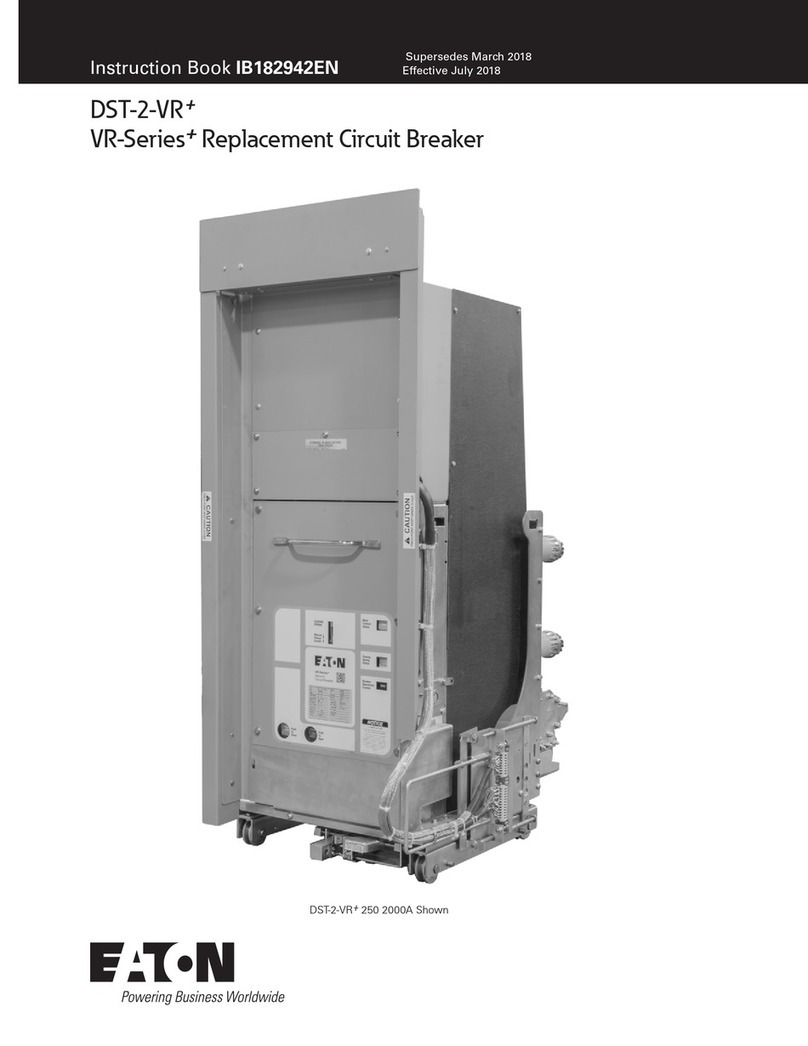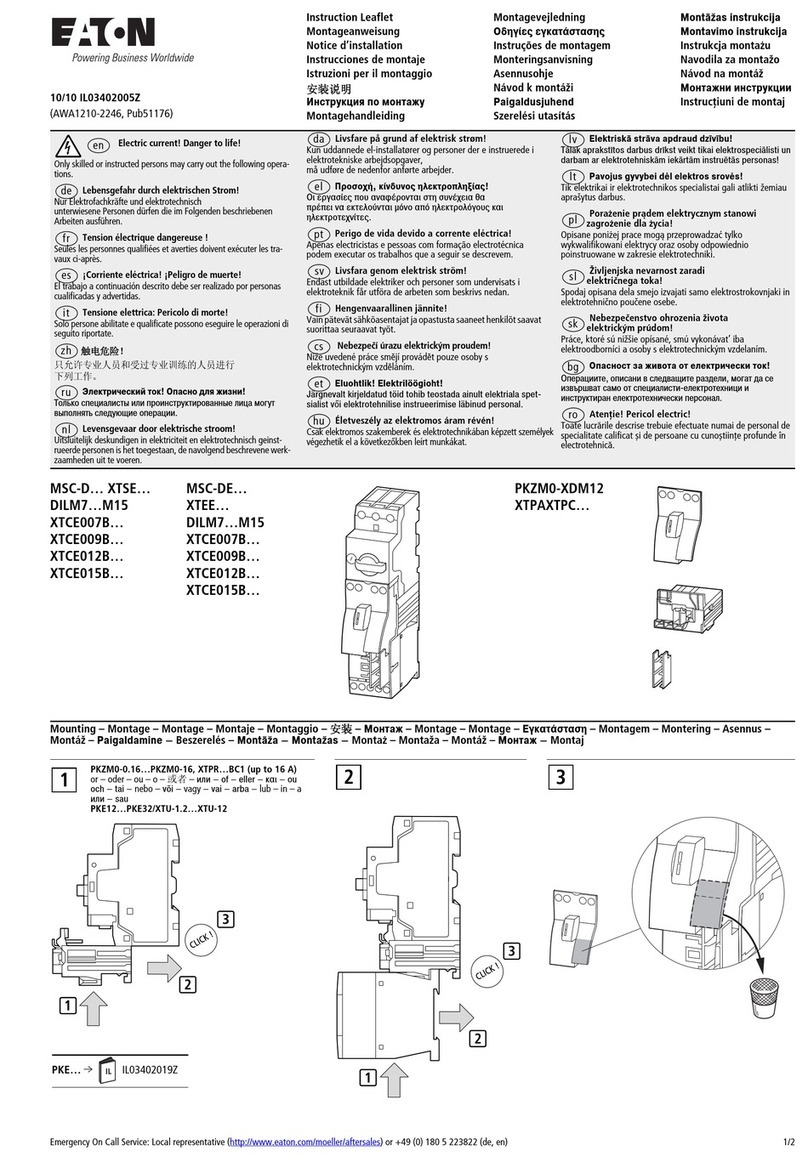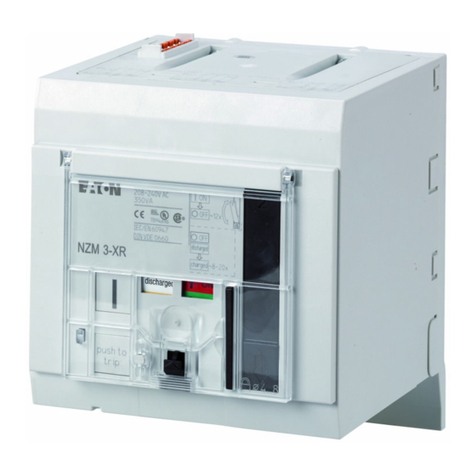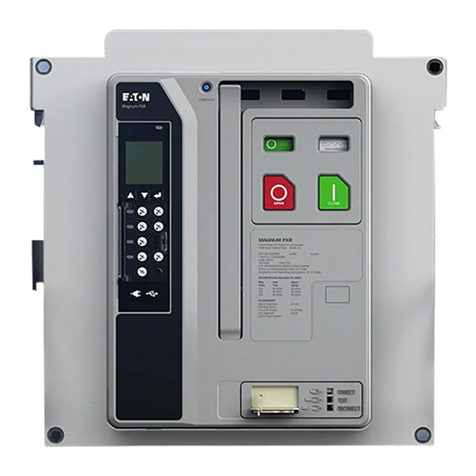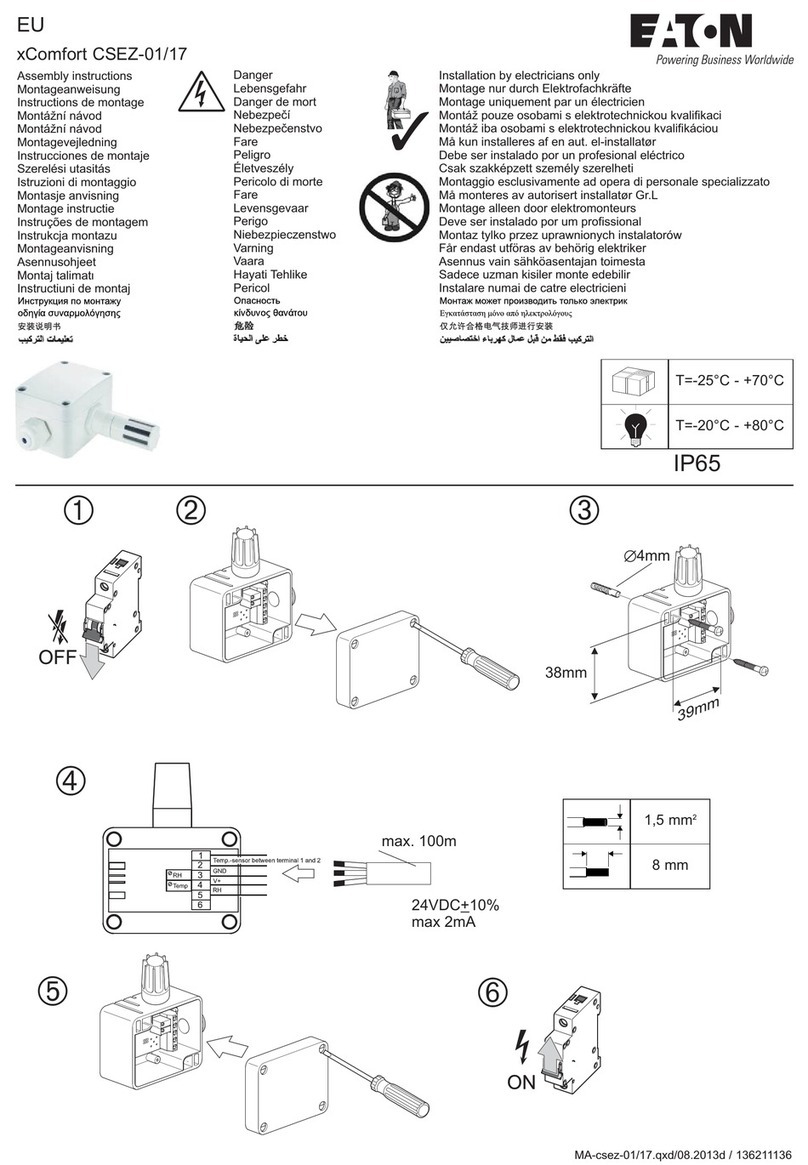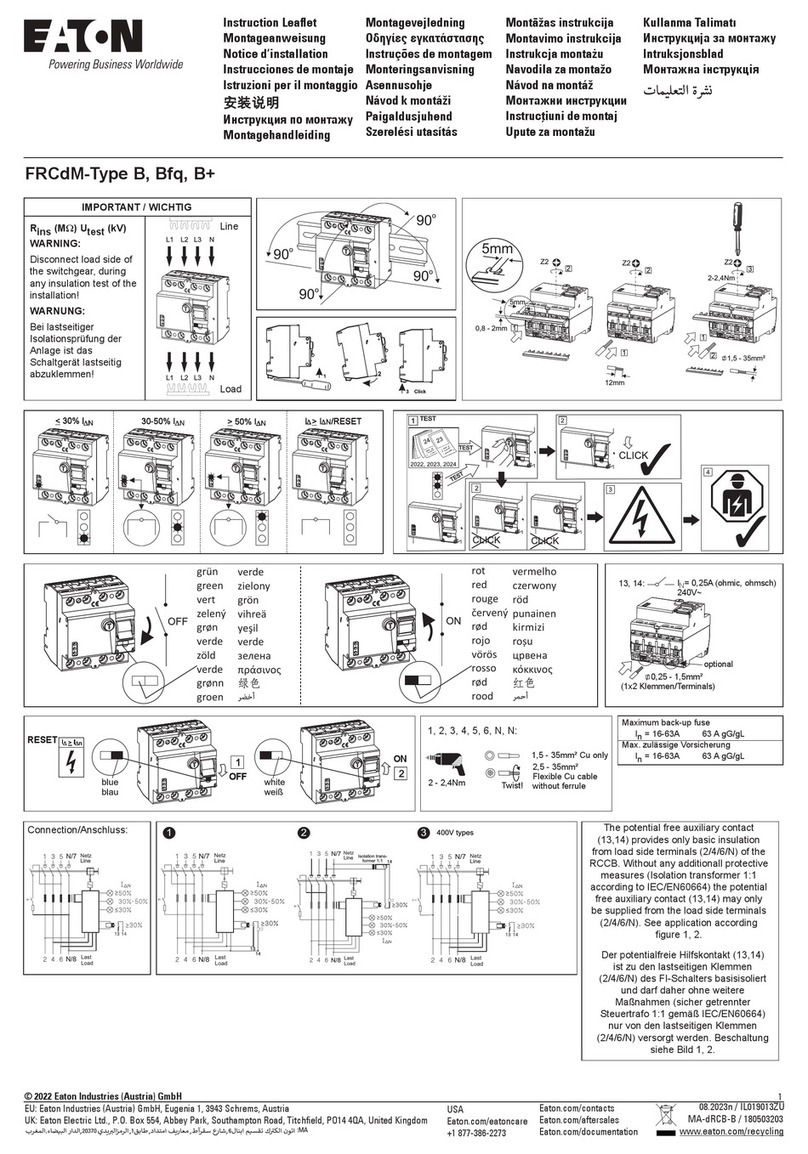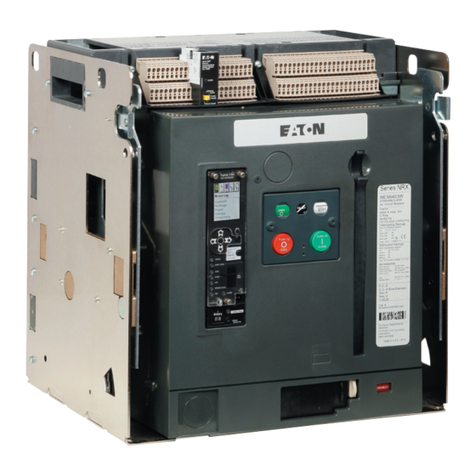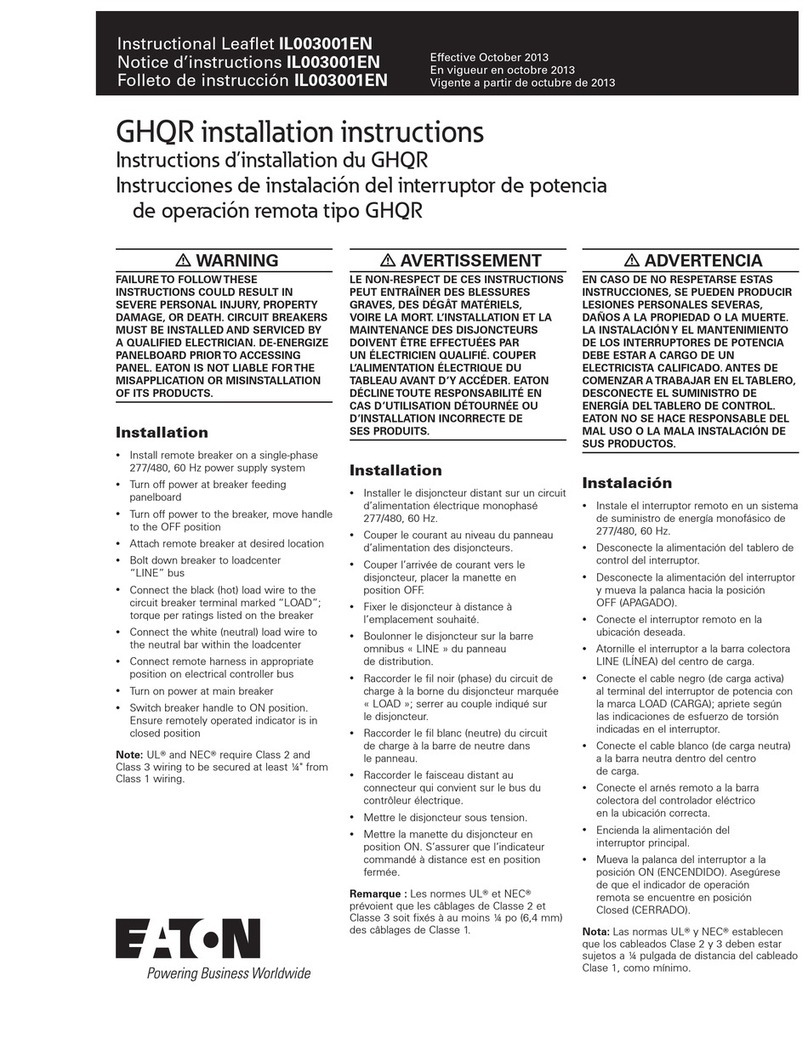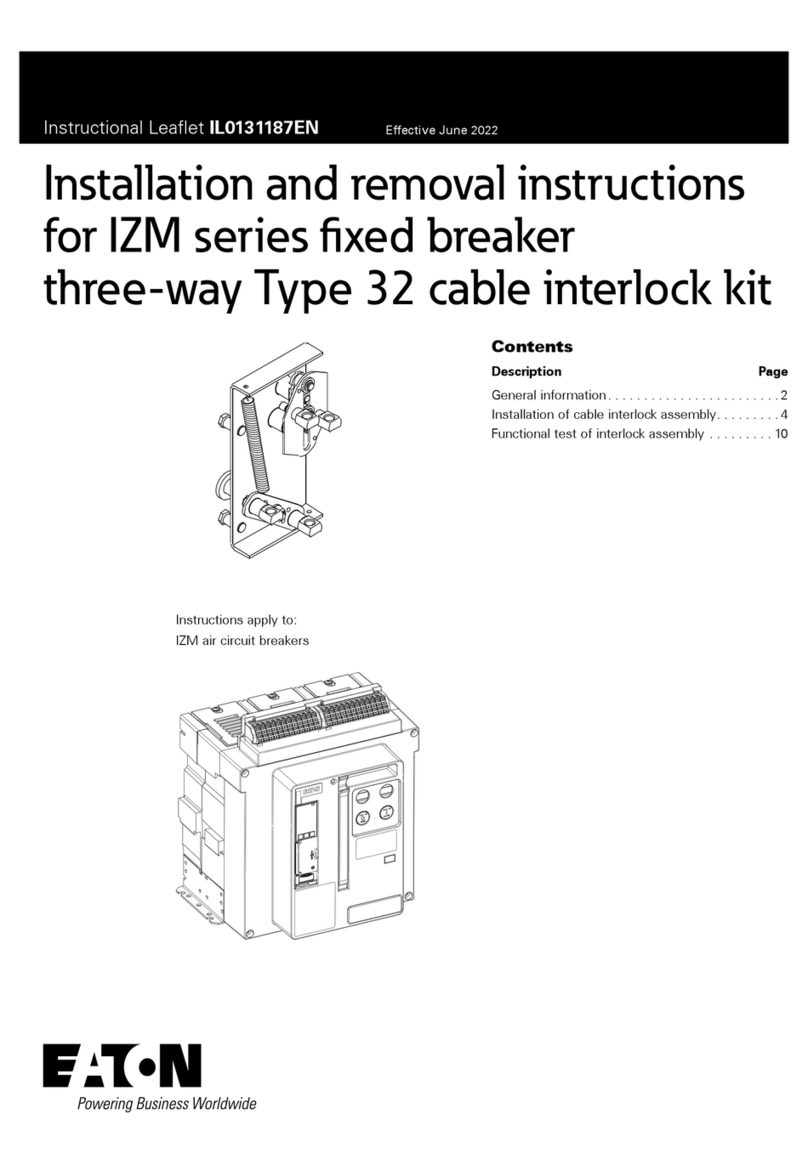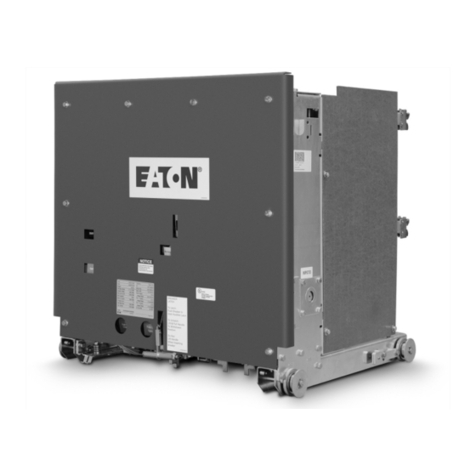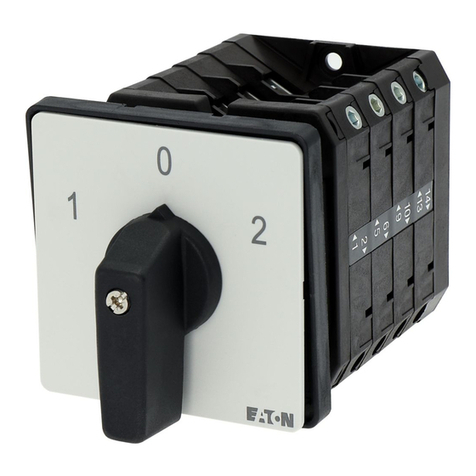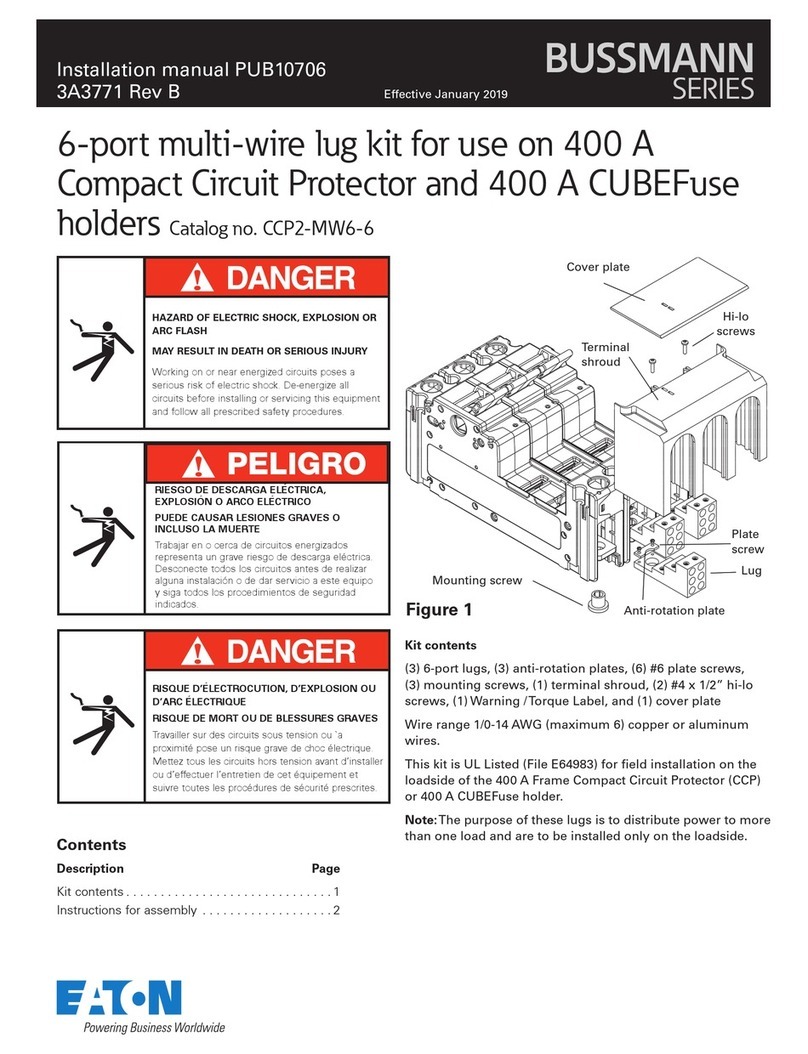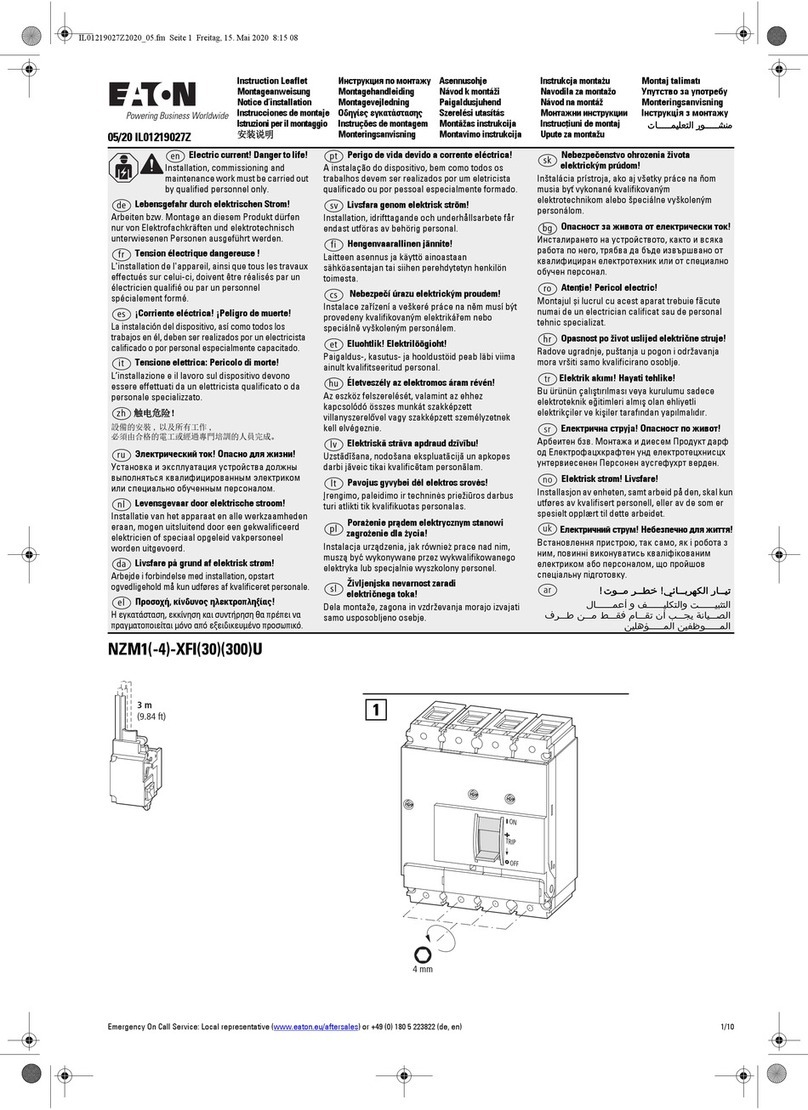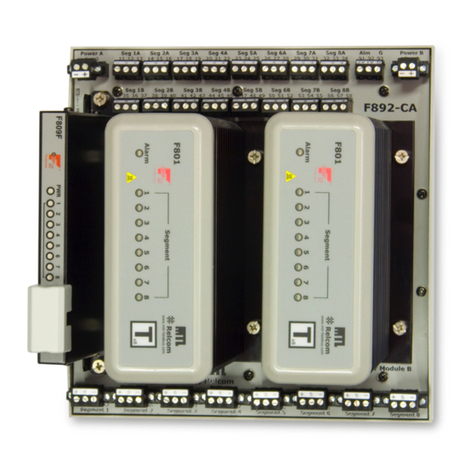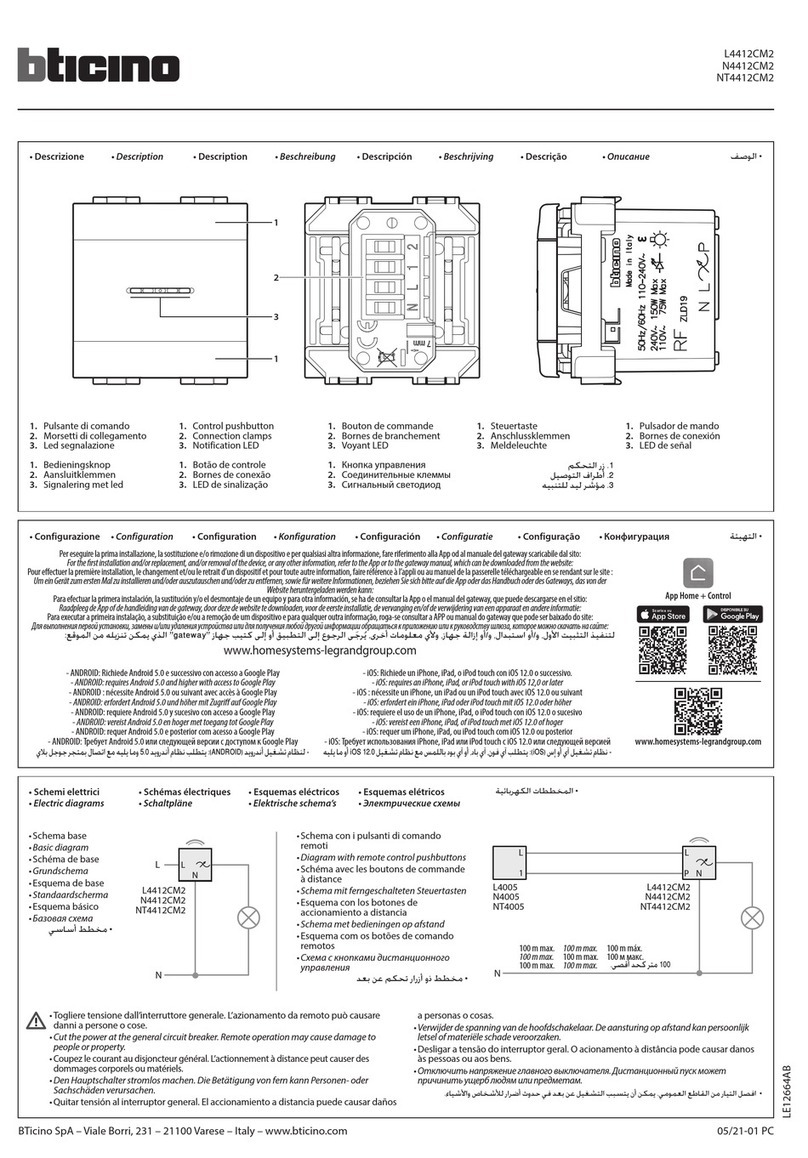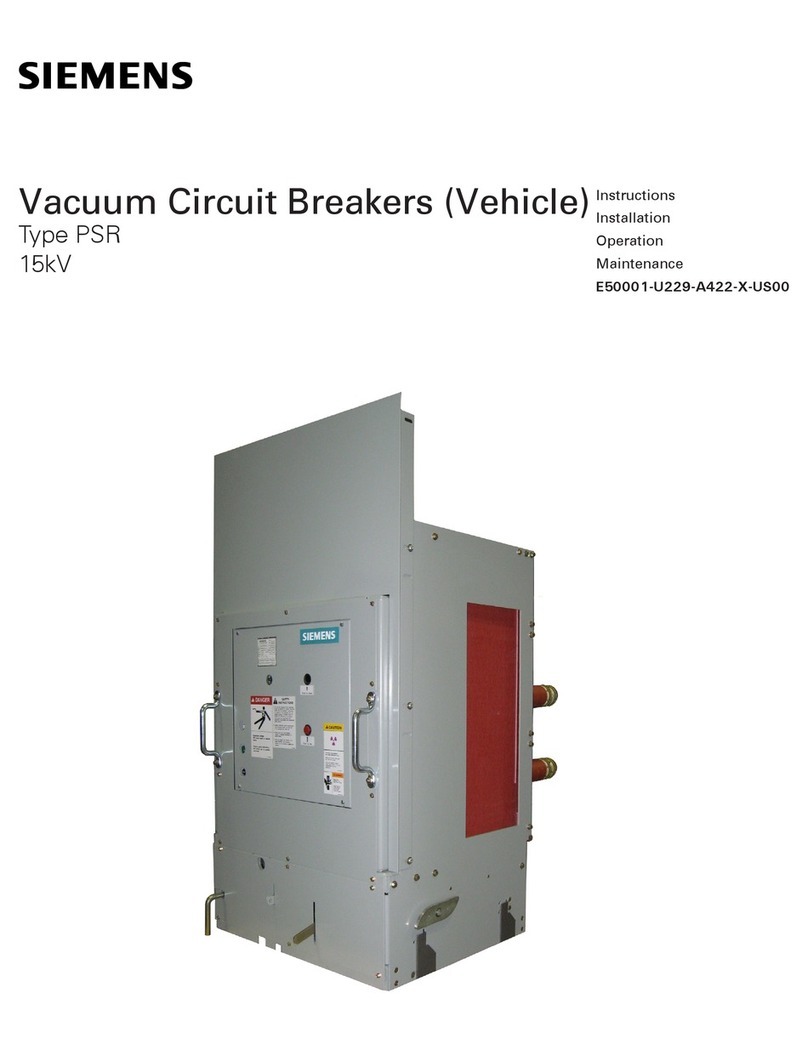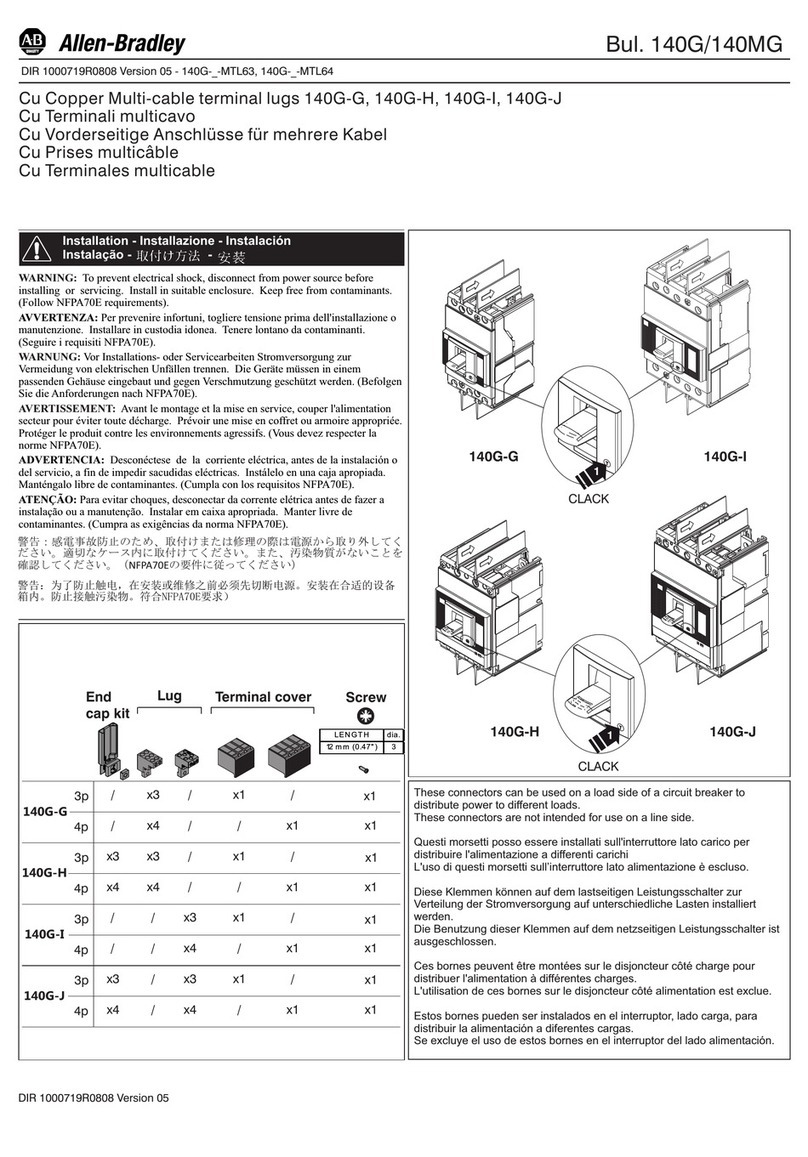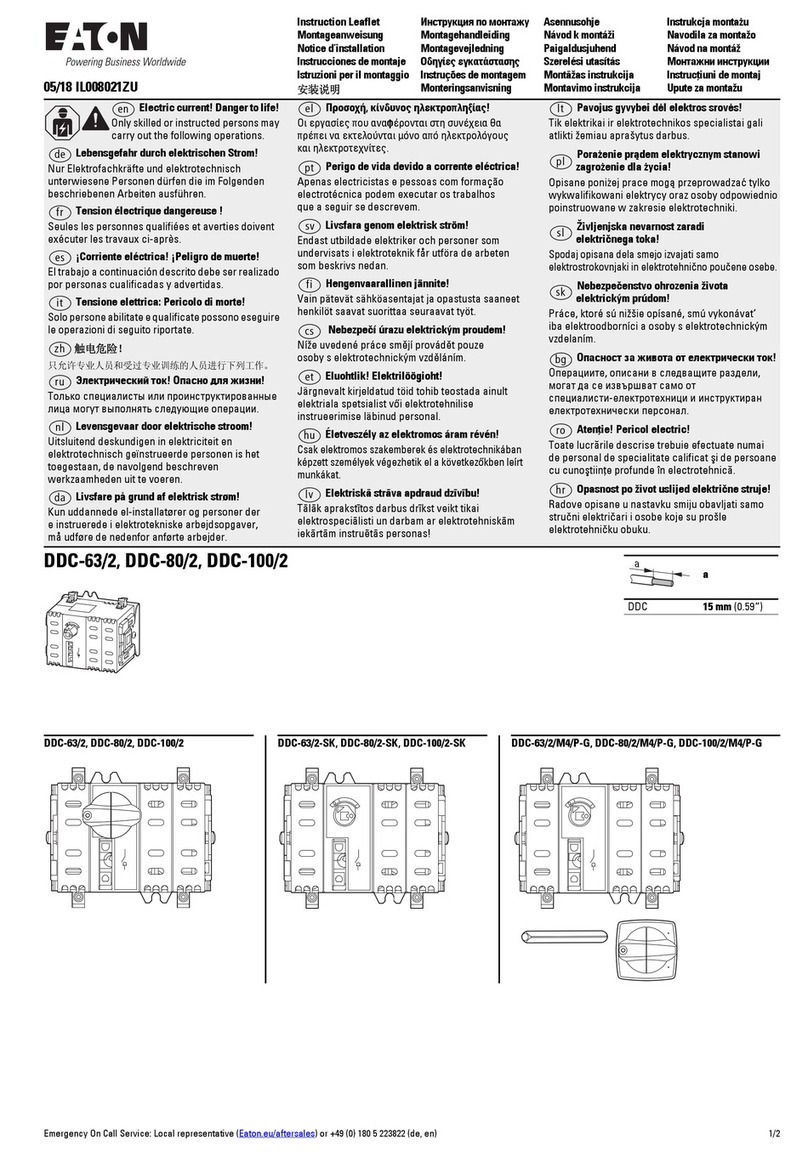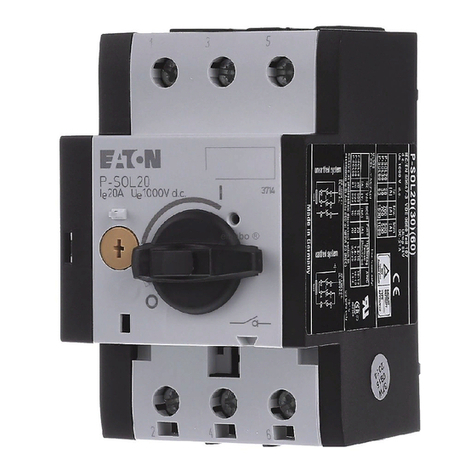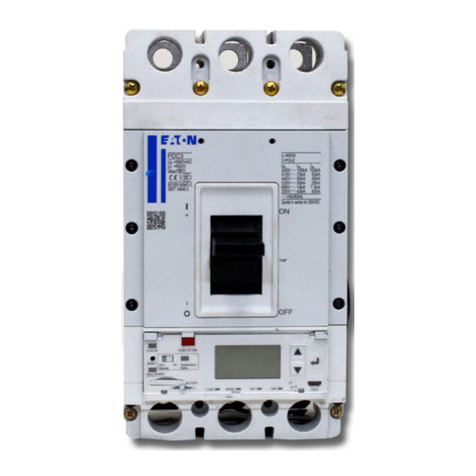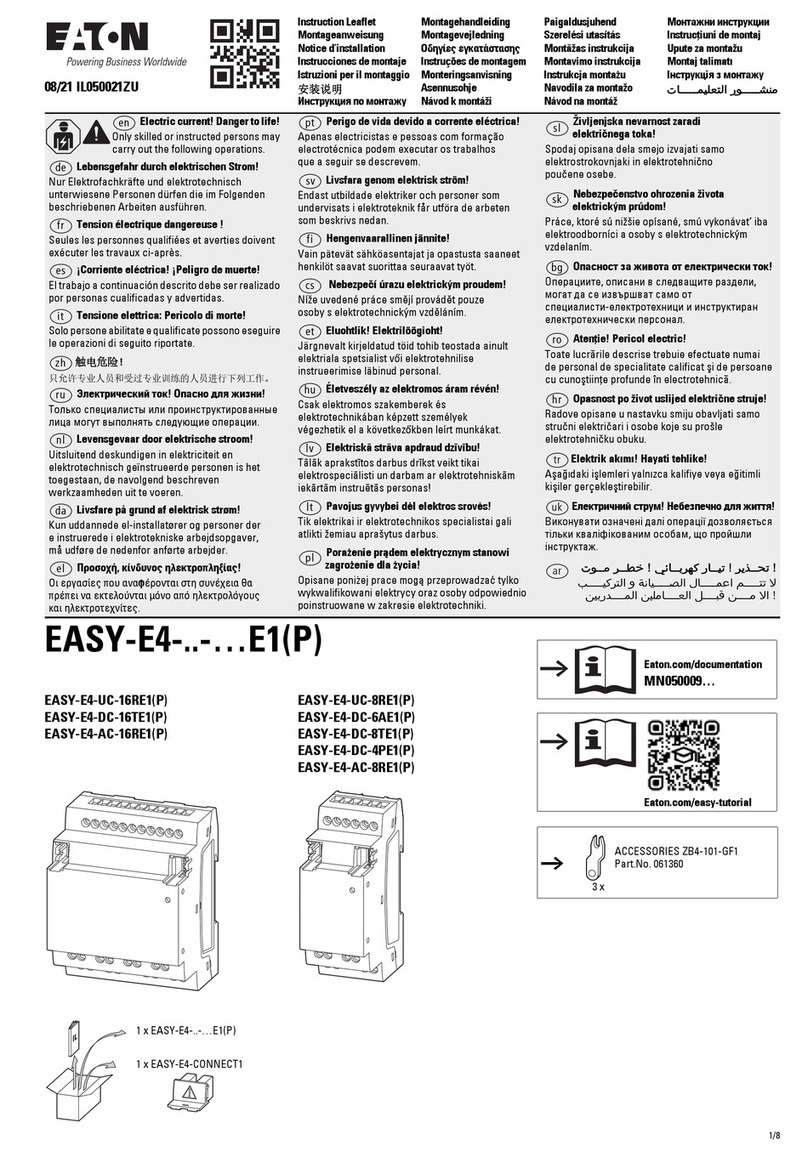
WARNING
INSTALLATION OR MAINTENANCE SHOULD BE ATTEMPTED
ONLY BY QUALIFIED PERSONNEL. THIS SUPPLEMENTAL
INSTRUCTION BOOKLET IS INTENDED TO ACCOMPANY
THE ORIGINAL INSTRUCTION BOOKLET PROVIDED WITH
THE VCP-W CIRCUIT BREAKER AND SHOULD NOT BE
CONSIDERED ALL INCLUSIVE REGARDING INSTALLATION
OR MAINTENANCE PROCEDURES. THIS IS NOT TO BE USED
IN PLACE OF THE VCP-W CIRCUIT BREAKER INSTRUCTION
BOOKLET. IF FURTHER INFORMATION IS REQUIRED, YOU
SHOULD CONSULT EATON.
IMPROPERLY INSTALLING OR MAINTAINING THESE
PRODUCTS CAN RESULT IN DEATH, SERIOUS PERSONAL
INJURY OR PROPERTY DAMAGE.
READ AND UNDERSTAND THE VCP-W INSTRUCTION
BOOKLET BEFORE ATTEMPTING ANY OPERATION OR
MAINTENANCE OF THE CIRCUIT BREAKERS.
THE CIRCUIT BREAKERS FEATURED IN THIS BOOKLET
ARE DESIGNED AND TESTED TO OPERATE WITHIN THEIR
NAMEPLATE RATINGS. OPERATION OUTSIDE OF THESE
RATINGS MAY CAUSE THE EQUIPMENT TO FAIL, RESULTING
IN DEATH, BODILY INJURY AND PROPERTY DAMAGE.
ALL SAFETY CODES, SAFETY STANDARDS AND/OR
REGULATIONS AS THEY MAY BE APPLIED TO THIS TYPE OF
EQUIPMENT MUST BE STRICTLY ADHERED TO.
THESE VACUUM REPLACEMENT CIRCUIT BREAKERS ARE
DESIGNED TO BE INSTALLED PURSUANT TO THE AMERICAN
NATIONAL STANDARDS INSTITUTE (ANSI). SERIOUS
INJURY, INCLUDING DEATH, CAN RESULT FROM FAILURE TO
FOLLOW THE PROCEDURES OUTLINED IN THIS BOOKLET.
ALL POSSIBLE CONTINGENCIES WHICH MIGHT ARISE
DURING INSTALLATION, OPERATION, OR MAINTENANCE,
AND ALL DETAILS AND VARIATIONS OF THIS EQUIPMENT
ARE NOT COVERED BY THESE INSTRUCTIONS. IF FURTHER
INFORMATION IS DESIRED BY THE PURCHASER REGARDING
A PARTICULAR INSTALLATION, OPERATION, OR
MAINTENANCE OF THIS EQUIPMENT, THE LOCAL EATON’S
ELECTRICAL SERVICES & SYSTEMS REPRESENTATIVE
SHOULD BE CONTACTED.
WARNING
TO PROTECT THE PERSONNEL ASSOCIATED WITH
INSTALLATION, OPERATION, AND MAINTENANCE OF THESE
CIRCUIT BREAKERS, THE FOLLOWING PRACTICES MUST BE
FOLLOWED:
•Read the instruction booklet provided with the
VCP-W circuit breaker before attempting any
installation, operation or maintenance of these
circuit breakers.
•Only qualified persons, as defined in the National
Electrical Safety Code, who are familiar with the
installation and maintenance of medium voltage
circuits and equipment, should be permitted to
work on these circuit breakers.
•Always remove the circuit breaker from the
enclosure before performing any maintenance.
Failure to do so could result in electrical shock
leading to death, severe personnel injury or
property damage.
•Do not work on a circuit breaker with the
secondary test coupler engaged. Failure to
disconnect the test coupler could result in an
electrical shock leading to death, personnel
injury or property damage.
•Do not work on a closed circuit breaker or a
circuit breaker with closing springs charged.
The closing spring should be discharged and the
main contacts open before working on the circuit
breaker. Failure to do so could result in cutting or
crushing injuries.
•Do not use a circuit breaker by itself as the
sole means of isolating a high voltage circuit.
Remove the circuit breaker to the Disconnect
position and follow all lockout and tagging rules
of the National Electrical Code and any and all
applicable codes, regulations and work rules.
•Do not leave the circuit breaker in an
intermediate position in the cell. Always have the
circuit breaker either in the Test or Connected
position. Failure to do so could result in a flash
over and possible death, personnel injury or
property damage.
•Always remove the maintenance tool from the
circuit breaker after charging the closing springs.
•Circuit breakers are equipped with safety
interlocks. Do not defeat them. This may result in
death, bodily injury or equipment damage.
Table of Contents
Vacuum Interrupter
Vacuum Interrupter 3
Vacuum Interrupter Assembly 3
Vacuum Interrupter Integrity Test
Vacuum Interrupter Integrity Testing Configuration 4
Insulation Integrity Test
Power Frequency Withstand Voltage Testing Configuration 5
Current Path Resistance Test
Current Path Resistance Testing Procedure 6
Vacuum Bottle Contact Inspection
Contact Erosion Indicator 7
Contact Wipe and Stroke 7
Mechanism Lubrication
150VCP-W Mechanism Lubrication 8
Component Replacement
Replacing The Charging Motor 9
Replacing Spring Release and Shunt Trip Coils 10
Component Installation 11
Installation of Second Shunt Trip 11
Undervoltage Trip Device 12
Component Adjustment 13
Adjustment of the Motor Cutoff Switch 13
Adjustment of the Operations Counter 14
CloSure™ Test 15
CloSure™ Test 13
VCP-W Circuit Breaker Model 16
VCP-W 5/15 63kA 3000A 16
2
EATON |Visual Instruction Booklet Essentials | 150VCP-W 25kA 1200A | January 2017

